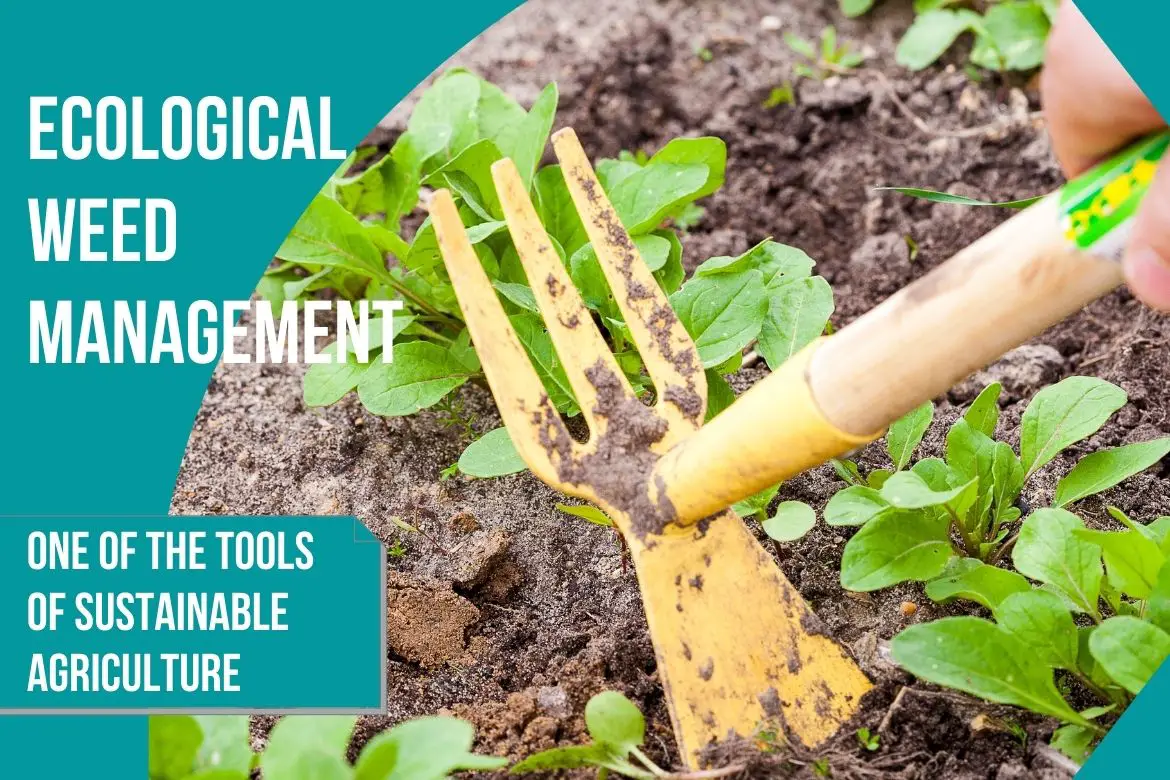Table of Contents
Introduction
Ecological Weed Management includes a combination of methods that promote long-term weed suppression by using ecological interactions among crops, weeds, soil and other taxa fostered by managing agroecosystems so that chemical weed control is avoided as much as possible.
Ecological management of weeds varies in numerous ways from traditional weed management.
In this context, it is crucial to develop integrated weed management systems to reduce herbicide use while maintaining crop productivity without negatively impacting farmers’ income or natural resources.
Fundamental to ecological weed management is enhancing crop competition so as to decrease competitive weed pressure on the crop.
The intent is to integrate the use of agronomic, genetic, mechanical, biological, and chemical methods to manage weeds in an agro-ecosystem that promotes crop growth and development with little or no environmental interference from weeds.
A sustainable farming system is one in which natural resources are managed in such a way that future generation production functions are not effected.
Advantages of Ecological Weed Management
1. Ecological weed control is cheap.
2. It is easy to implement.
3. There is no residual problem.
4. No technical skills are required.
5. Crops are not damaged.
6. Weeds are effectively eliminated.
7. Maintenance of the crop-weed ecosystem.
Disadvantages of Ecological Weed Management
1. Weed control cannot be done immediately and quickly.
2. Weeds are held in a suppressed state.
3. It is impossible to control perennial and problematic weeds.
Strategies of Ecological Weed Management
1. Crops and cultivars that are competitive.
2. Time, method, rate of sowing, and spacing of rows.
3. Crop rotation, trapping, catching, and cover crops.
4. Intercropping, sole cropping, and mixed cropping.
5. Irrigation time and method.
6. Fertilizer type, rate, time, and method.
7. Fallowing and ploughing in summers.
8. Soil Solarization.
9. Using stale seedbeds.
10. Drainage and flooding.
11. Plants and cultivars that are resistant to parasitic weeds.
12. Incorporating residues into the soil.
Crops and cultivars that are competitive
1 . Crop species
There are different traits associated with each crop species, such as germination, tillering, branching, leaf nature, leaf orientation or inclination, root growth, relative growth rate, plant height, etc. As a result, competition between plants to smother weeds varies quite a bit.
2 . Crop cultivator and crop variety
Choosing the right crop cultivators. for example, in late-sown conditions, WH-291 and HD-2285 were more competitive than HD-2009 and S-308 against wild oat (Avenaludoviciana Dur.).
Crop sowing (Sowing Method, Sowing Time, Sowing Rate, and Row Spacing)
1 . Sowing Time
It is possible to see an early initial growth of the crop in areas where almost no weeds are present or where there are fewer weeds. Wheat sown in October, for example, faces more competition from weeds than wheat sown in November or December.
2 . Sowing Method
Broadcasting tends to encounter more weed infestation, while line sowing typically encounters less.
3 . Sowing Rate
A stronger seedling means a healthier and more competitive crop that can smother weeds on its own. Crop density is typically determined by sowing rate, percent viability, and seed germination.
4 . Row Spacing
Finding a row spacing that is close enough to prevent intraspecies / intra-specific finishing is important.
5 . Crop rotation
Planting different crops sequentially on the same piece of land year after year is known as crop rotation. In crops such as sorghum and maize, Brassicas, Orobanche ramose, and solanaceous, rotation of crops can be very effective against parasitic weeds such as Striga hermonthica /asiatica.
Changing crop ecology
Changing cultural practices such as cultivation date, mowing, planting/harvesting and fertilization also helps in ecological weed control. Other agricultural practices can also be mixed and changed, such as shallow versus deep roots, cold versus warm seasons, row versus drill, heavy versus light feeders, and foliage density.
Cropping Practice
1 . Intercropping, sole cropping, and mixed cropping.
Under rainfed and unirrigated conditions, intercropping or mixed crops are more profitable than sole crops, but with assured irrigation, sole crops may be superior to maximizing sole crop yields. This also prevents weed herbicide resistance.
2 . Cover crop / live mulch
Essentially, live mulch is a living covering that is preserved by growing a cover crop. Food crops are planted directly into it without any tillage or chemical plowing (using herbicide), which destroys the established cove
3 . Catch and Trap Crops
Trap crops are false hosts releasing chemicals for the germination of striga and inducing germination of striga seeds.
Irrigation time and method
Irrigation schedules and methods can affect weed growth and emergence. Submergence controls some weeds, drip irrigation lessens weeds near tree crops and alternate furrows reduce weeds in dry furrows.
Soil Solarization
Solar energy is used here for the purpose of drying weeds. Using this technique, a pre-soaked fallow field is covered with a thin transparent plastic sheet to raise soil temperature by 5 – 10 degrees Celsius.
Using stale seedbeds
Seed beds that have been stale for a while are those where a few first flushes of weeds have been eliminated before a crop is planted. A well-prepared field is soaked with irrigation or rain and the weeds are allowed to germinate before being destroyed by plowing or non-residual herbicides.
Fallowing and ploughing in summers
Fallowing involves exposing seeds, underground structures of deep-rooted perennial weeds such as Cyperus species, Cynadondactylon, Digitaria abyssinica, insects, pathogens, deep tillage nematodes etc. to the direct sunlight to kill them.
Incorporating residues into the soil
To wheat, sunflowers, multiple crops, and mustard, lentil crop residue is phytotoxic. Crop residue incorporation in the soil is also considered to be beneficial for the crop in some cases. This not only helps the farmer but also minimizes the problems caused by crop residue burning.

